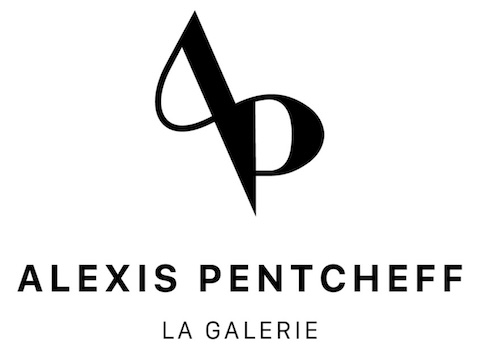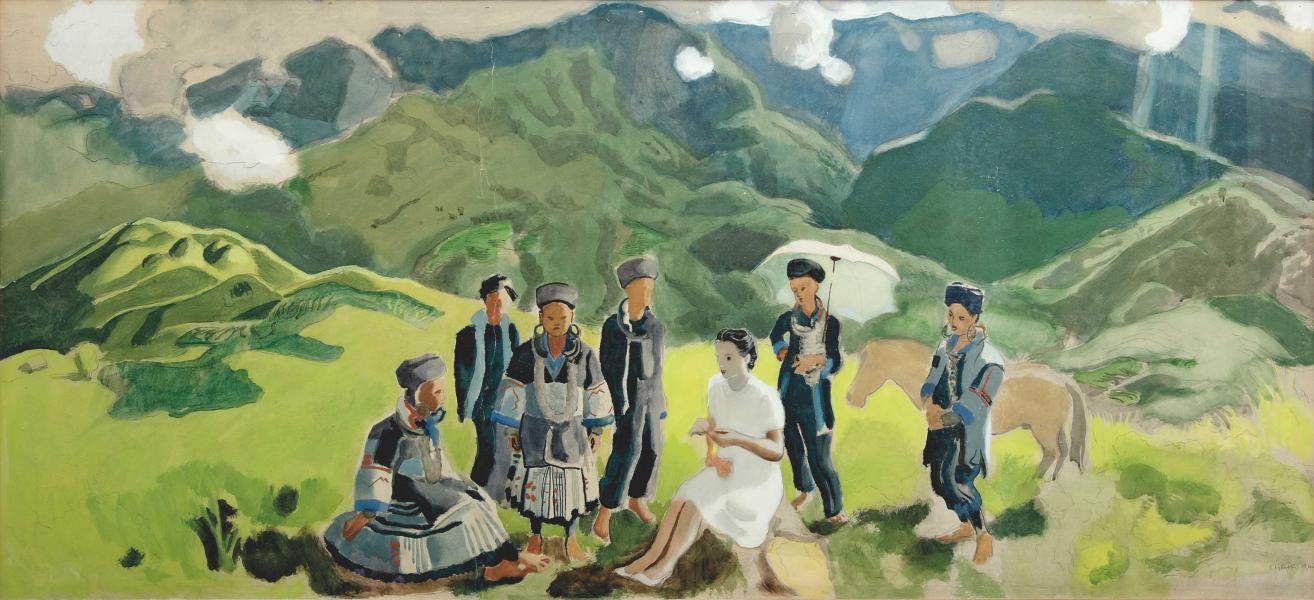Chapa (Sapa)
Oil, gouache, watercolor and pencil on paper, located "Chapa" and dated 42 lower right
84.50 x 185 cm
History :
Joseph Inguimberty's estate
Private collection, France
Exhibition :
Poésie de Joseph Inguimberty, Musée Regards de Provence, Marseille, 6 mai - 12 november 2017, illustrated on p. 48/49.
Bibliography :
Giulia Pentcheff, Joseph Inguimberty, Premier catalogue de l'oeuvre peint, 2012, illustrated on n°118, p. 132
In Sapa, Inguimberty's meeting with ethnic minorities
In this large work on paper currently on display in the gallery, Inguimberty deploys an unusual panoramic setting. He who rather depicts flat rice fields and their workers on the banks of the Red River or corners of ponds under the canopy, shows us here a mountainous setting, on the border of China, where the clouds cling to the peaks.
At the foot of Phan Xi Păng, in this region that the French called "the Tonkinese Alps," a group of Black Hmong surround Jeanne, the painter's wife.
Inguimberty was particularly interested in this ethnic minority, showing in particular, in a series of small works, women sewing, in these traditional dark-colored clothes, which distinguish them from the other Hmong and more widely from the other ethnic groups present in Sapa.
Jeanne, dressed in white, is sitting on a rock in the center of the group. Having flown to Hanoi to accompany her nieces to their parents who were living there (the war had broken out in France and their grandparents could no longer look after them), the young woman, originally from Menton, had met the artist and stayed with him in Indochina. In July 1942, Jeanne and Joseph got married. This work, dated 1942, is an account of their stay in Sapa, probably during the summer, perhaps their honeymoon...

